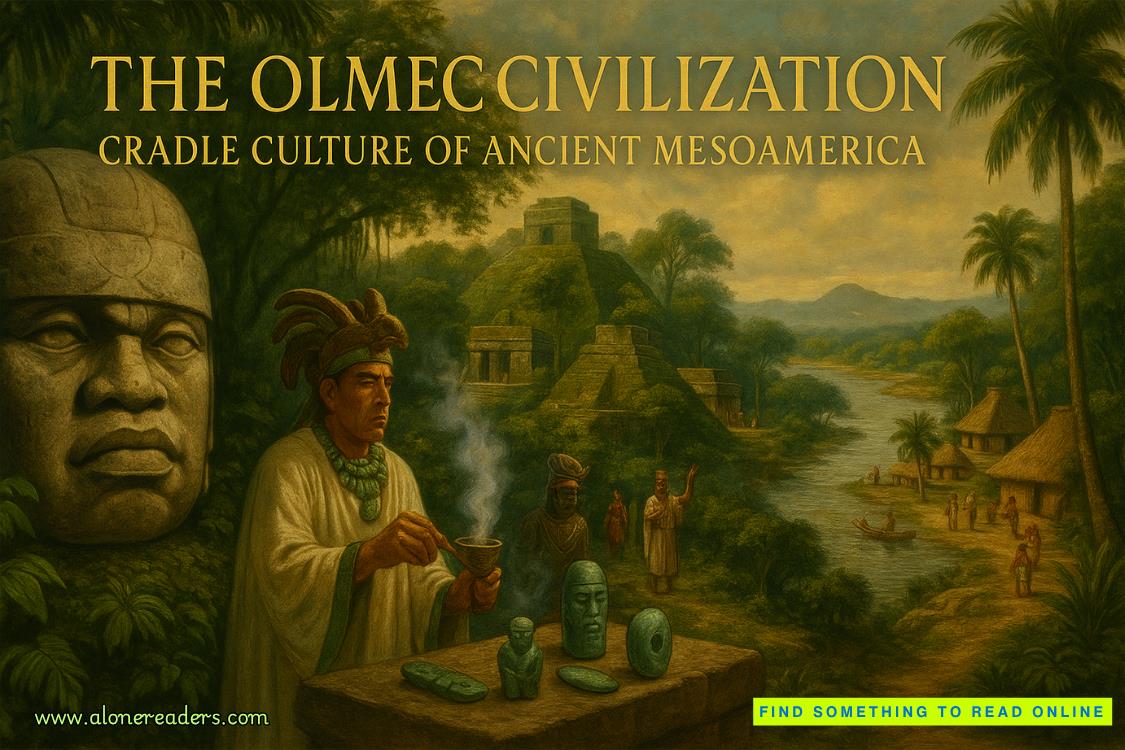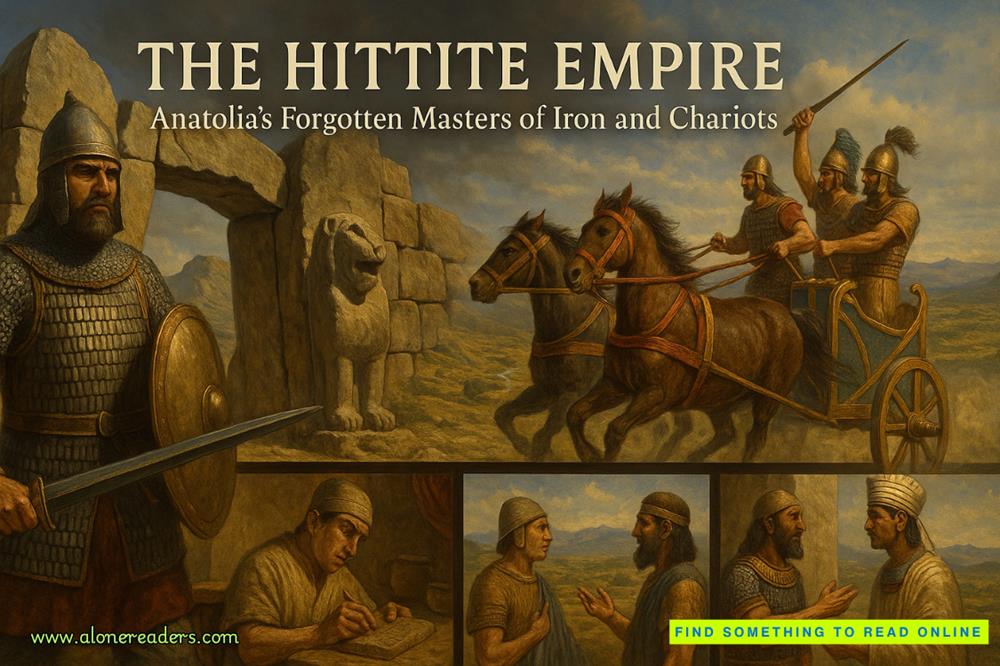Page 7 of Beneath the Poet's House
Saoirse rounds a corner. There are three shallow steps ahead, leading to a closed door with “The Art Room” carved across a piece of wood mounted above it. She doesn’t see the “By Request Only” caveat taped beneath the wooden sign until she’s pushed the door halfway open. She hesitates, but a glance behind her tells her no one’s watching. Not entirely sure why, she slips inside and closes the door.
The muted teal of the room’s walls contrasts sharply with the white bookshelves. Light fills the space from a large skylight, glinting off the cherrywood conference table beneath it and the books and papers spread haphazardly over its surface. There’s a lattice window along one side, overlooking the main section of the Athenæum below. Across from the window, the subjects of seven gold-framed portraits stare unsmilingly down at her. Edgar Allan Poe sulks from within two of the frames, but Saoirse recognizes none of the others. A taxidermy raven tilts its head, beak open, beneath a glass bell jar on an ebony mother-of-pearl-inlaid table. There’s a joint thermostat-and-moisture-monitoring device mounted to the wall, set to seventy degrees and 50 percent humidity.
It’s vaguely familiar, this space, but less so than the rest of the library. Saoirse guesses she’s been in the Art Room before but onlybriefly. Perhaps she stuck her head inside once or twice to alert Jonathan to her presence, back in another life. She is about to turn, her empty stomach reminding her of why she left the house in the first place, when she notices the books and papers on the conference table again, how their placement is not as random as she first thought. The tomes are open to places marked with lengths of ribbon. Various velvet-cushioned, glass-front boxes hold ancient-looking letters. Additional photocopied letters are cataloged in binders or piles, the piles delineated with little knickknacks: a ceramic raven, a brass bust, a miniature daguerreotype.
The artifacts are meant for an exhibit. An exhibit someone’s been working on until just recently. And their work is not quite done.
Saoirse should leave before they return. But then she spots the photograph, a black-and-white version of one of the seven portraits on the wall. It’s the same woman who was in the daguerreotype Lucretia handed to her the night before.
The poet, Sarah Helen Whitman.
She leans over, studying the image—the curly hair, the long-sashed bonnet—then transfers her gaze to the stack of letters beside it. The signature on the top page is cut off, but on the next page, a second correspondence begins:
I have pressed your letter again and again to my lips, sweetest Helen—bathing it in tears of joy, or of a “divine despair.”
The letter is signed: “Edgar.” A spidery feeling that’s at odds with the warmth of the room travels up her back. She’s been in Providence less than twenty-four hours and been confronted twice with the tortured, enigmatic writer she hasn’t otherwise thought of since high school English.
“What the hell?” she whispers, placing the photocopies on the table. She is reaching for a small navy book, the spine of which readsThe Last Letters of Edgar Allan Poe to Sarah Helen Whitman, when thedoor to the Art Room swings open. A middle-aged woman with short blonde hair steps inside and looks up. She’s holding a small to-go cup, and when she sees Saoirse, how close Saoirse is standing to the letters on the table, her mouth parts in a little O, and her eyes go almost comically wide.
“What are you doing?”
“I was ...,” Saoirse starts. “I’m ... I found this room and didn’t realize ... is it off-limits?”
“The sign,” the woman says and gestures over her shoulder. “I’m working on something and have this space reserved the entire week.” Her words are clipped, high-pitched. The woman isn’t angry; she is panicked, as if, though everything is as she left it and Saoirse has backed away from the table, she half expects Saoirse to start smashing glass-front boxes and shredding priceless letters with gleeful abandon.
“I’m sorry,” Saoirse says. “I didn’t realize. I just renewed my membership and was getting reacquainted with everything.” Saoirse isn’t sure why she ignored the instruction on the door and why she’s lying now, but she does know she was drawn to the Art Room by the same force that brought her down Benefit Street to the Athenæum.
The fact of Saoirse’s membership registers with the woman; that it was a renewal seems to soften her further. “It’s not a problem,” she says. “I’m sure you can appreciate the historical significance of our exhibits and understand that we must exercise caution while preparing them.” A bit of her earlier anxiety returns, and she leans over the table, surveying its contents. “You didn’t handle any of the artifacts, did you?”
“No, no, of course not. Again, I’m so sorry. Let me get out of your hair.”
Saoirse goes the long way around the table to avoid having to brush past the woman. Before she can get to the door, the woman says, “I’m Leila Rondin. Welcome back to the Athenæum, Ms. ...?”
“White. Saoirse White.”
“Ms. White. If you’re interested in Edgar Allan Poe and Sarah Whitman, the exhibit goes up at the end of the month.”
“I’m—” She almost says,I’m living in Sarah Whitman’s house, but decides against it. One veritable team of ghost hunters obsessed with 88 Benefit Street is enough; no need to add another Poe–Whitman enthusiast to the mix. “I am interested,” she says instead. “I’ll definitely come back to view the exhibit.”
Leila smiles. “That’s great.”
“In the meantime,” Saoirse says, and points to the small navy book, “is there another copy of this in the library? I was hoping to read some of their letters.”
Leila perks up. “Of course. Right this way. I’ll show you where all the books having to do with Poe are shelved.”
Saoirse follows Leila, but at the door, the librarian gestures for Saoirse to exit first. She takes a ring of keys from her pocket and locks the Art Room, then returns the keys and spins on the top step, her features arranged in a way that’s meant to suggest the act was nothing more than routine.That’s the last time Leila Rondin runs for a coffee without securing an exhibit prep,Saoirse thinks.
They wind through several stacks, sunlight streaming in from the alcove windows, and cross the dizzyingly narrow aisle separating the right wing of the Athenæum from the left. Leila stops abruptly and runs a finger along the books on the third shelf of the stack before them.
“Here we are.” Leila points to spine after spine displaying titles with all manner of references to Poe and his work.The Haunted Palace: A Life of Edgar Allan Poe. Edgar Allan Poe: The Man, Volumes I and II. The Tell-Tale Heart: The Life and Works of Edgar Allan Poe. Midnight Dreary: The Mysterious Death of Edgar Allan Poe.Then, finally, another edition of the book of letters between Edgar and Sarah.
Saoirse slides the book from the shelf, flips through it, then closes it and tucks it under her arm. “Perfect,” she says. Catching sight of another title—Poe’s Helen Remembers—she points to it. “Who’s Helen?”
“The same Sarah Helen Whitman whose letters you hold in your hand,” Leila says. “She first published poetry using the name ‘Helen,’ a fact that was convenient for Poe when he reworked an older poem,‘To Helen’—intended to evoke images of Helen of Troy—for Mrs. Whitman during their courtship.”
Saoirse adds the book to the one she already holds. She might as well learn as much as she can about the two figures everyone around here seems to be so obsessed with. “Thank you for your help.”
She expects Leila to bid her farewell and stride back toward the Art Room, but the woman leans in and whispers, “Do you want to see something amazing?”















